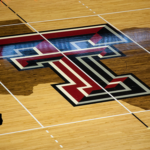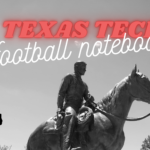Part one of this delved into the type of player that David Gibbs and Zach Spavital tend to identify, particularly in the defensive secondary. If you wanted to be optimistic about the state of the Texas Tech defense, this would be it, that David Gibbs can find players. He’s got an eye for it and for me, that’s always been the strength of what Gary Patterson does, which is to have that eye for finding the players you haven’t heard of, finding their right position and developing that talent. And yes, I absolutely admit that the pool of examples is very small, there’s just been a few players that have gone on to the NFL from the Gibbs/Spavital pool.
But we should be somewhat quick to maybe point out that Houston has had a top 20 defense (total yards surrendered) this past year, largely made up of players recruited by Gibbs/Spavital, a top 50 defense in 2014 and a top 20 defense in 2014. Again, to be clear, Todd Orlando had a lot to do with the success of that defense, but so did Gibbs/Spavital.
I also want to when David Gibbs was hired. Wanna take a guess as to when that was?
January 5, 2015.
Now, think about where we are in terms of this current recruiting class and how a large majority of those players have already made a decision about where they are going to play. Think about how much time has passed for coaches to develop relationships and recruit players to your school and then consider that the date that Gibbs was hired is still essentially three weeks away. Think about how there’s no chance for any or very few mid-term enrollees or possibly flipping a junior college recruit when February arrives.
I also want to take you back to that 2015 class where there seven, yes, just seven, defensive commits. There were 20 commits overall, 13 of them offensive, and just seven of then on the defensive side of the ball: Broderick Washington, Breiden Fehoko, D’Vonta Hinton, Lonzell Gilmore, Christian Taylor, Jamile Johnson and Paul Banks. And I’d guess that he really didn’t recruit any of them, except for Banks and of those that played, it was Fehoko and Banks, with Banks contribution being less than significant.
Kingsbury made it up to Gibbs in the 2016 class, where the defense had 14 players in a class of 25. And think about how many played in 2016: Douglas Coleman, Brayden Stringer, Johnathan Picone, Jordyn Brooks, Kevin Moore, Mychealon Thomas, Joeseph Wallace, and Desmon Smith. That’s eight players, seven of them being freshmen, who saw significant time last year. And there was pretty much a moratorium on JUCO guys last year (which is good and I’ve got no problem with that) other than Thomas and two receivers.
And now, Gibbs gets the chance to add some JUCO players to what is arguably a pretty young core to his defense and of them the junior college players are all early enrollees.
If you’re inclined to be positive, then you might think that Gibbs/Spavital are building the foundation once again and he might be at a point where if he’s not retained after this year, I’m guessing that someone is probably going to benefit.
The answer to the question for the title of this series is completely and wholly dependent upon whether or not Gibbs and his guy, Zach Spavital, have correctly identified talent. My thought here is that they’ve done it before at Houston and they did it quite well. The biggest question marks for me are along the line but that’s largely because there was so much of the 2016 class that we simply haven’t seen (Houston Miller, Nick McCann, Clarence Henderson and Noah Jones). Again, this post is probably for people who want to lean on the positive side of things and we need those too (I was pretty negative towards the last half of the season). Maybe the one thing that turns this program around sooner rather than later is going to be David Gibbs taking it in the shorts for two or three seasons while he recruits players that will hopefully be the foundation of the defense. Gibbs did this the right way, not with easy fixes and a ton of JUCO guys to build the foundation. The JUCO guys have to supplement the roster, not make up the entire plan of a particular defensive group (i.e. only signing JUCO defensive linemen for an entire class).
And now I suppose, this is the question that’s about to be answered in 2017. Just how close is Gibbs/Spavital to turning this thing around into respectability?








